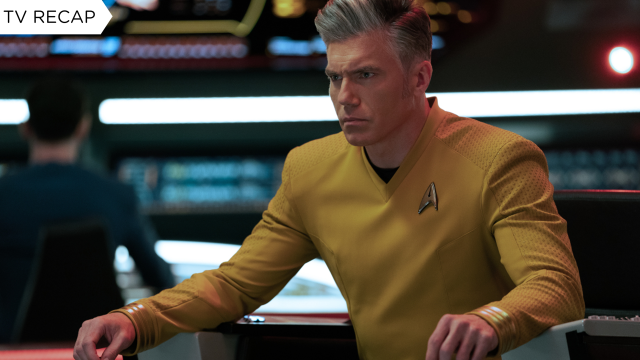So far, Strange New Worlds has found strength in simplicity: week in, week out, a new adventure, a new bit of fun, and it’s done and dealt with before moving onto the next. Even the higher-stakes moments have always ended with a clarity that our Starfleet heroes overcame hardship, did the right thing, and saved the day. This week’s episode offers something to challenge that, but it doesn’t always quite work.

“Lift Us Where Suffering Cannot Reach,” the seventh episode of Star Trek: Strange New Worlds, is the first of its debut season where things conclude on a pointedly bitter, inconclusive note for the Enterprise crew. After a distress signal from a ship under fire puts Pike across the path of a familiar face — a high-ranking official from the planet Mejalus, Alora (Lindy Booth), who it turns out Pike had saved on a mission as a lieutenant — the Enterprise finds itself mediating an internal conflict over the planet’s traditions surrounding a young boy known only as the First Servant (Ian Ho). An important figure in Mejalan society, the First Servant is set to take part in an upcoming ceremony of ascendance to ensure Mejalus’ floating cities remain in the planet’s skies, but Alora and the child’s other ward, the boy’s biological father Gamal (Huse Madhavji) quickly find themselves and the Enterprise caught up with a faction that wants to stop the rite from going ahead.
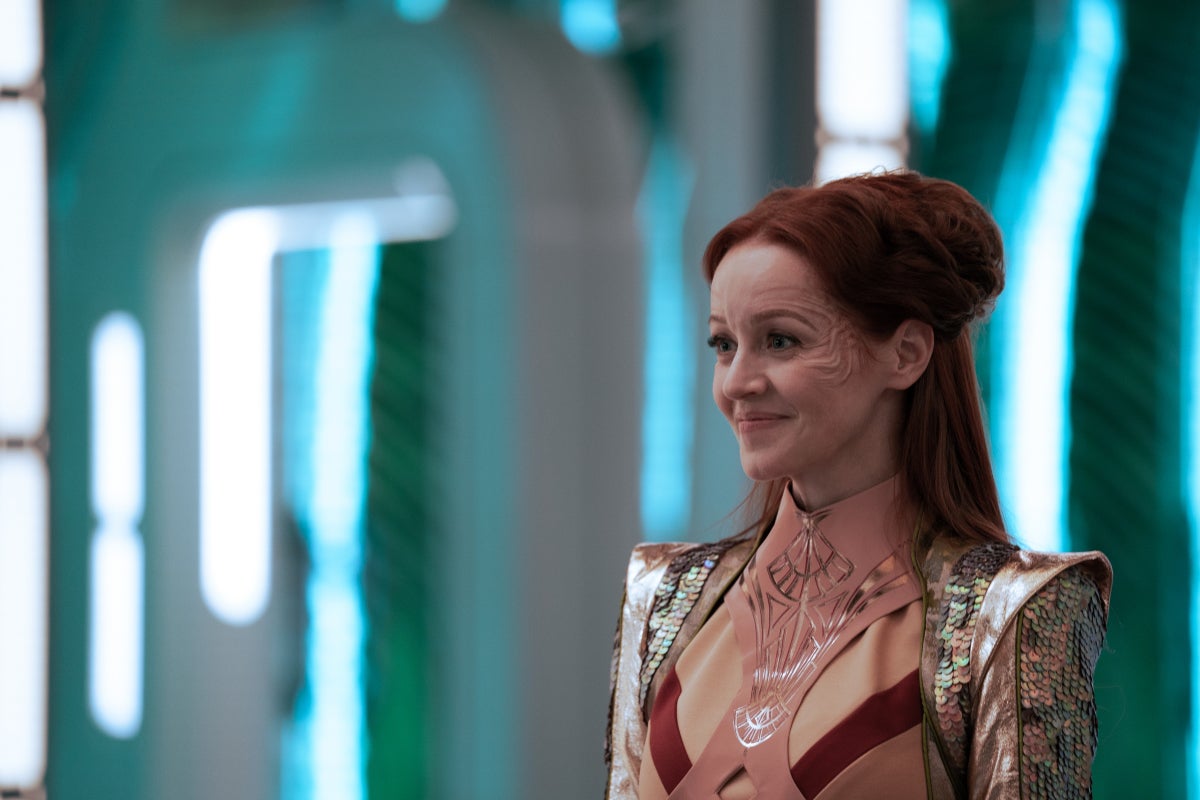
It is, as Strange New Worlds has been time and time again already, an intriguing riff on classic Star Trek premises. Mejalus isn’t a Federation world, and is in fact rigidly isolationist, at first unwilling to receive help from the Enterprise, and then reticent to reveal details about its advance society as Pike and the crew investigate the attacks on the First Servant. It’s the first time in the series we’ve got to spend an extensive period of time among a (living) alien society, and one that feels truly alien — for all of Pike and Alora’s past connections, the Enterprise crew feel like the strange new outsiders here to a world and people that operate on very different frames of perspective to what they’re used to.
The parallel between the idealised Federation and what the Mejalans have made for themselves with their traditions makes for some compelling friction as the investigating continues and more twists in the plot get revealed… including the eventual revelation that Mejalus’ utopia is built on something horrifying to Pike and the audience alike (more on that later). The moral complexity on display when this is revealed, as well as that aforementioned unresolved, bitter pill of an ending, is a refreshing tone switch for a show that has, for the most part, been relentlessly upbeat for the vast majority of this season. It stands to reason that some of the strange new worlds the Enterprise will visit on its mission sometimes just really, really suck, or that sometimes missions and events don’t pan out the way our heroes want them to. In a series that has repeatedly found strength in optimistic storytelling neatly tied up in an episodic bow, throwing at least one story into the mix where things don’t get easily wrapped up by the time the credits roll is at the least a bold narrative juke that Strange New Worlds should get credit for attempting.
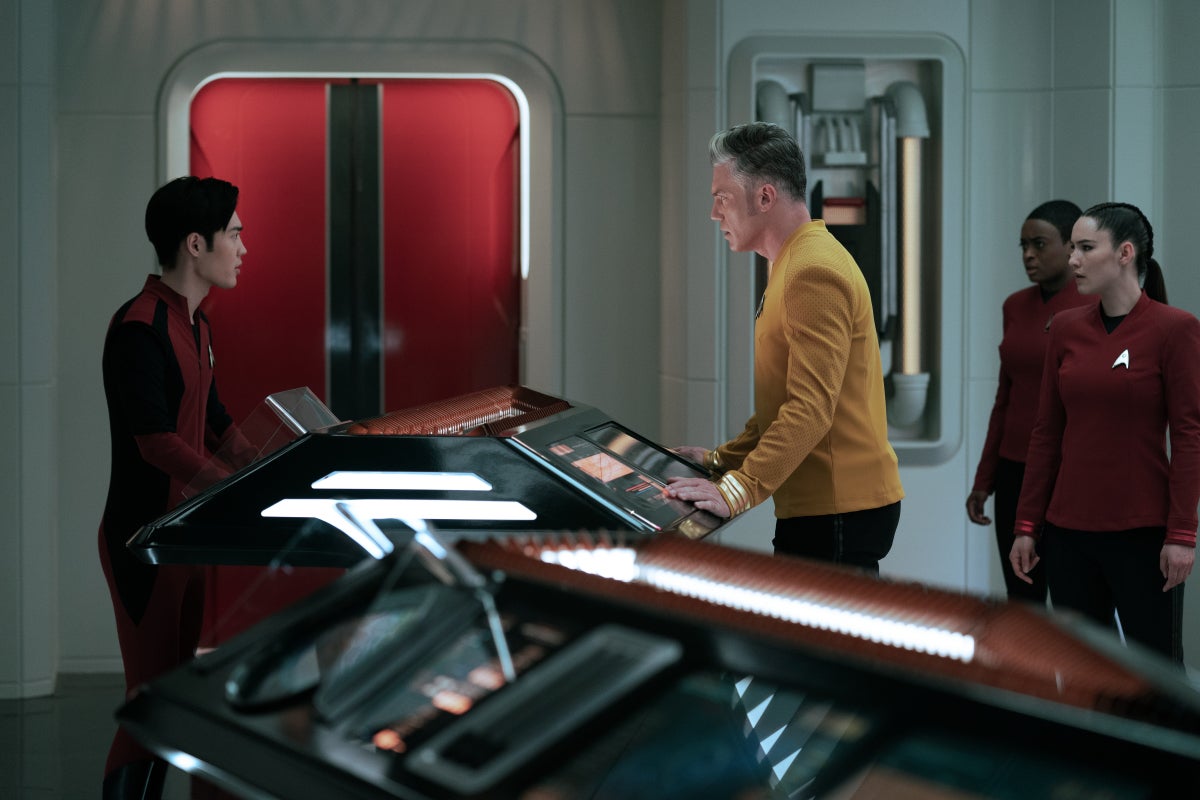
But if credit’s due, why does it feel like it’s only due in part? Because as interesting as the idea “Lift Us Where Suffering Cannot Reach” is built around is, the execution leaves a little something to be desired. The Enterprise’s investigation of just what is really happening on Mejalus is less of an investigation where our heroes figure things out because they’re smart people who are good at their jobs (for the most part, at least; there is a satisfying little beat where Uhura and La’an get to work together, making a fun case for getting to see more of that duo in the future), and more narratively structured like they’re standing around for another twist to happen. Because the episode really is about twists, on twists, on twists — at first we and the Enterprise crew are led to believe there’s one particular traitor among the Mejalans, a guard from the First Servant’s inner circle. Then, when that gets addressed quickly enough, twist, it was Dr. Gamal who secretly had it in for his own son and was working with rebels from a secluded Mejalan colony world!
Then, twist!!! That wasn’t the case at all, and it turns out Mejalus’ traditions suck because the First Servant’s role in society is to get hooked up to a giant battery system and slowly drained of life to keep the planet’s power systems running, and everyone’s just kind of ok with that except a rightfully horrified Pike! It’s a little too much for one narrative to handle, and with a lot of heavy foreshadowing from the get go that there’s Something Not Quite Right on Mejalus, as the plot gets underway you feel less invested in the Enterprise actually figuring out what isn’t right for themselves, or the emotional plight of characters like Gamal and the First Servant. Instead, it feels like you’re just waiting for the other shoe to drop… and then drop again when the second twist on a twist happens with a good 20 minutes of the episode left.
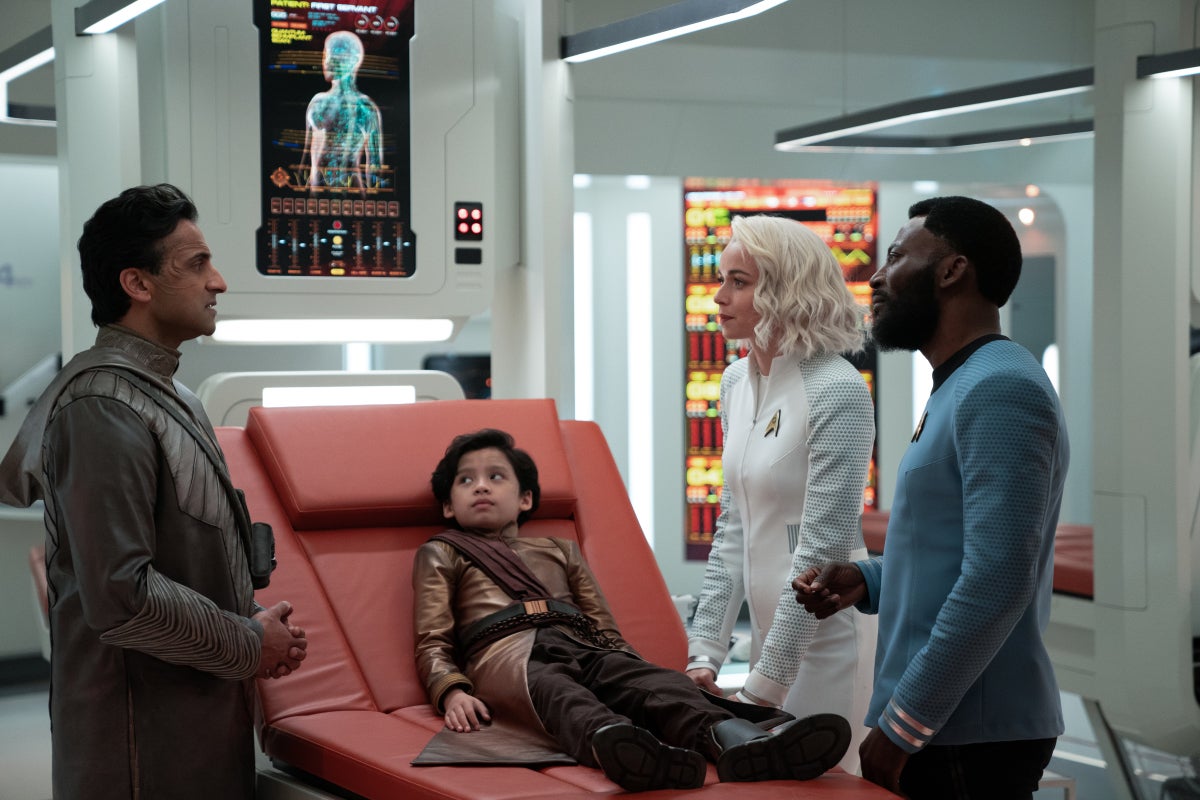
This complexity in episode structure feels less because the plot deserves it and ultimately like padding out an idea that wasn’t quite fleshed out enough, leaving it distinctly challenging to particularly care about any of the Mejalans and their plight until the very end, as Pike watches in disgust as the First Servant gets hooked up to the planet’s systems. What also doesn’t help is that between uncovering these twists in the main plot, “Lift Us Where Suffering Cannot Reach” also has dueling sub-narratives focusing on Pike and his past relationship with Alora, and Dr. M’Benga’s ongoing quest to find a cure for his terminally ill daughter while she’s in transporter stasis. In isolation, both of these arcs are good little threads. Pike rekindling his… close connection to Alora only to have the rug pulled under from him is a great moment for the character, but also allows him to further grapple with the acceptance of his inevitable fate when the latter offers him a chance to live on Mejalus and avoid the future he’s seen. Dr M’Benga’s subplot, meanwhile, plays on a similar theme when Gamal lets slip that advanced Mejalan medicine could provide the groundwork for a cure for his daughter’s illness — if not for the fact that Mejalan tradition strictly prohibits sharing their technology with outsiders.
But because you have both of these threads running alongside the main arc and its twists, they ultimately both feel a little underserved here. Strange New Worlds’ prior strengths have been built on the simplicity of a singular focus for its character B-plots — a single character getting a moment in the spotlight, giving them a beat that is progressed and largely resolved in one swoop. Having two characters pulling for attention here in arcs that conclude open-endedly — sadly for Pike, who’s left to ponder if Mejalus’ utopia is worth the sacrifice of a child, and at least more optimistically for M’Benga, when Gamal decides to offer him some ideas to help his daughter — throws even more layers on top of the too many layers the main plot already had, making them feel less like intentionally unresolved conclusions and more like there just wasn’t enough time in the hour to satisfyingly deal with them.
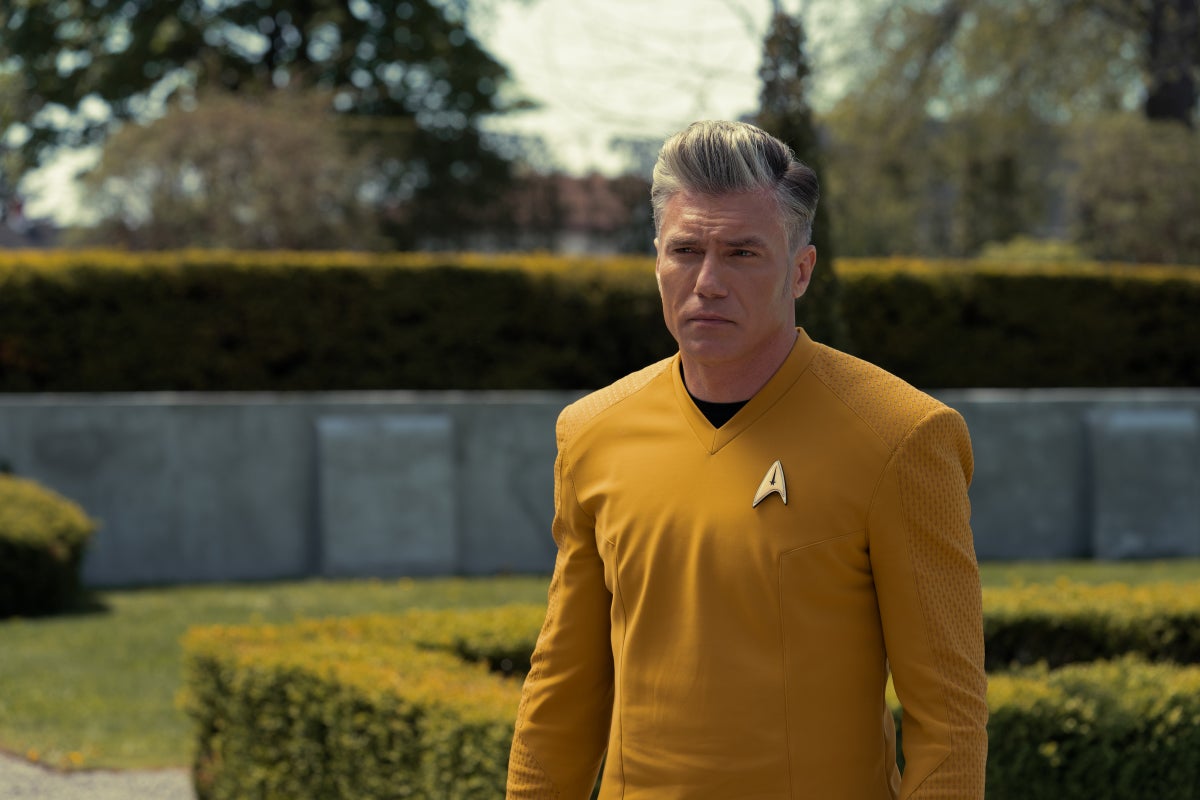
That’s really the double-edged sword of Strange New Worlds finally deciding to tackle an episode like this, pretty much three quarters of the way through its first season. It’s interesting, and arguably necessary, that the show has these kinds of tonal variances — there has to be dark for there to be light, there must be moral challenges to make the moments when our heroes stand by their convictions feel earned and rightfully heroic. It’s fun in the moment, but having every story end amicably and neatly would be a little boring, and Star Trek’s never been one to shy away from this in the past, even at its most episodic. But Strange New Worlds finally deciding to do this now, at this point in its debut run, and especially in what is maybe its most muddled story so far, exposes a flaw in its adherence to these one-off, episodic tales every week: how are we meant to feel about a complicated, unresolved ending, if we know the show’s just going to brush it off either way and carry on to the next adventure?
Strange New Worlds can and should be able to push itself beyond the comfortable premise it made for itself over the course of this season so far. But this week’s episode shows that perhaps just as importantly it needs to do so with the same clarity of purpose it shows when embracing that comfort zone, if it doesn’t want to come away from such an experiment feeling a little hollow. At least one perpetual strength of its episodic format remains if it doesn’t work though: there’s always next week’s episode to look forward to instead.
Want more Gizmodo news? Check out when to expect the latest Marvel and Star Wars releases, what’s next for the DC Universe on film and TV, and everything you need to know about House of the Dragon and Lord of the Rings: The Rings of Power.
